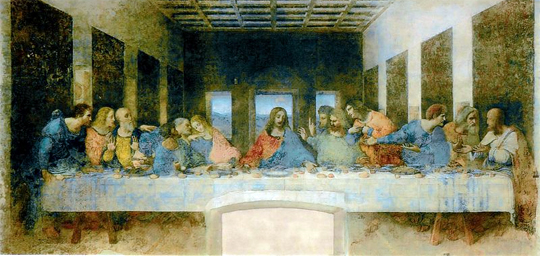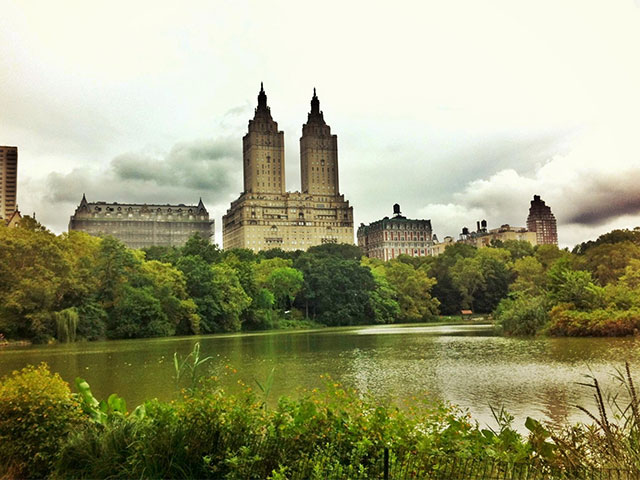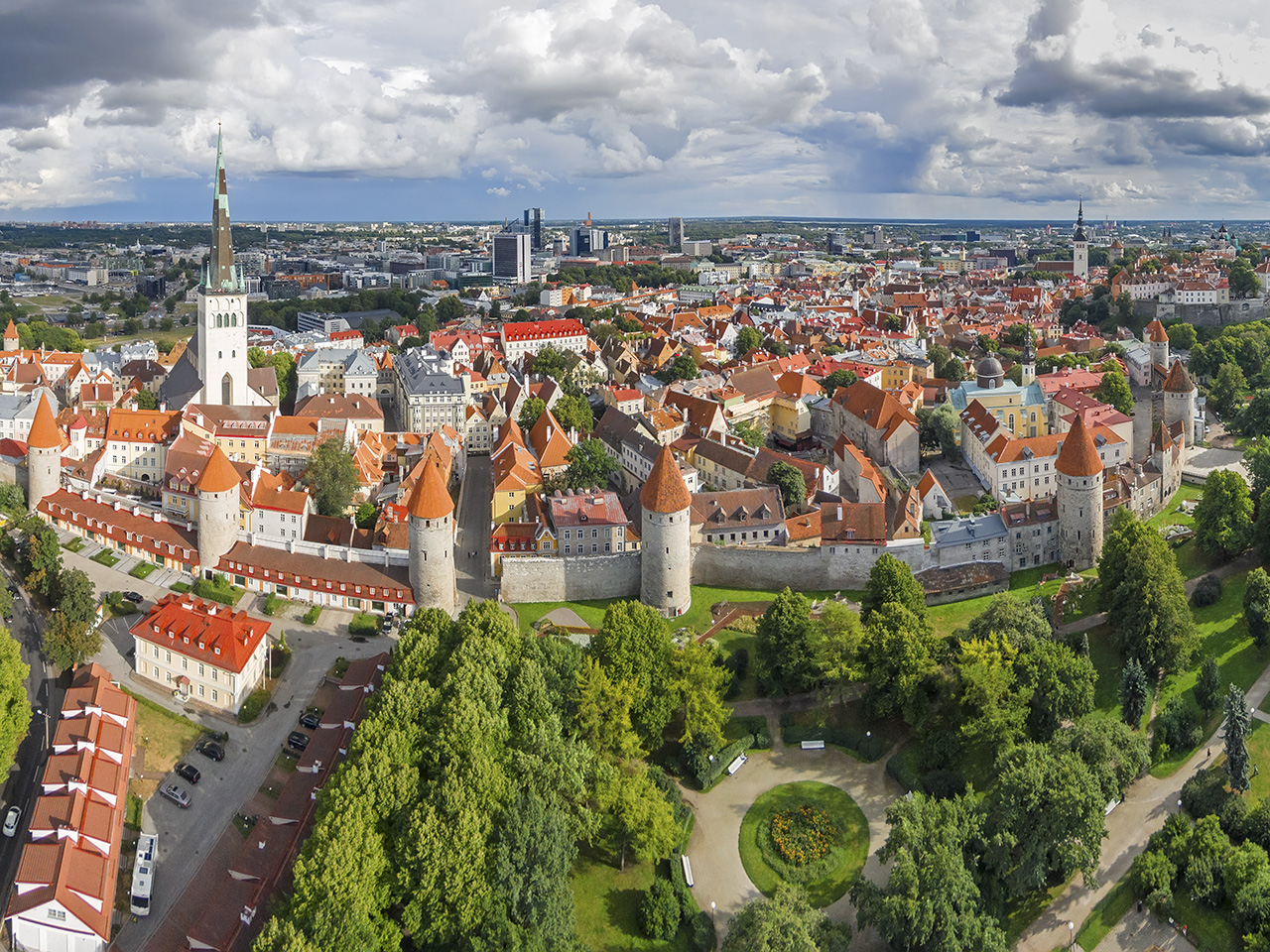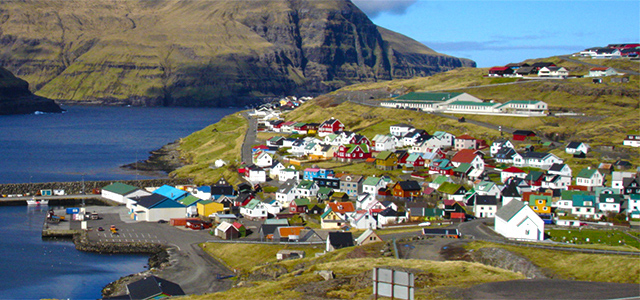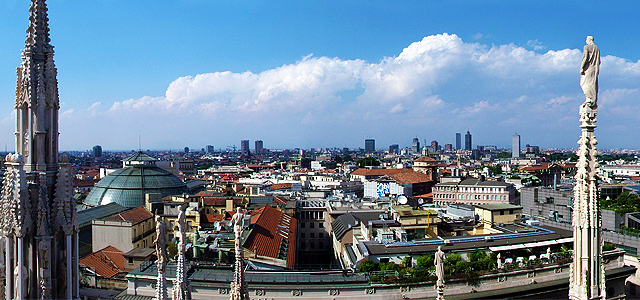
Milan: A blend of fashion, culture and history
You know it as a fashion capital, giving Paris a run for her money as forerunner in the fashion world. But beyond its label of being a shopping paradise and vibrant nightlife spot, Milan offers a wealth of historical sights. Lying in the plains of Lombardy in Northern Italy, it’s the country’s second largest city and home to one of the world’s most famous paintings- Leonardo Da Vinci’s last supper.
Here are some landmark attractions to visit.
Duomo Di Milano
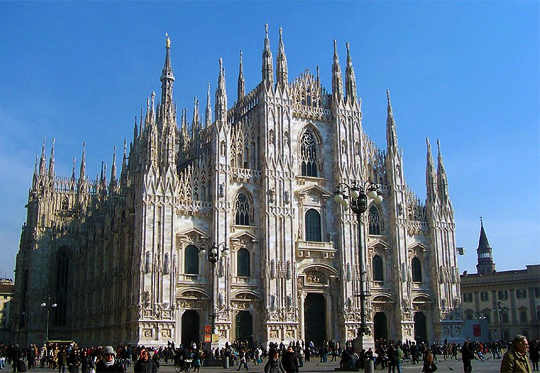
Begin the trip down Milan’s memory lane from the city center, with the third largest cathedral in the world, the Duomo Di Milano. A forest of soaring spires is visible from a distance. Up close, you’d notice the marble pinnacles and pillars intertwining with a network of flying buttresses. Predominantly gothic, those familiar with architecture may notice traces of Baroque and New-Classical influences. Upon entering, the expansive interior dwarfs you. The Duomo is said to have the capacity to hold Milan’s population of 40,000. It houses over 3000 statues and took a staggering 600 years to complete.
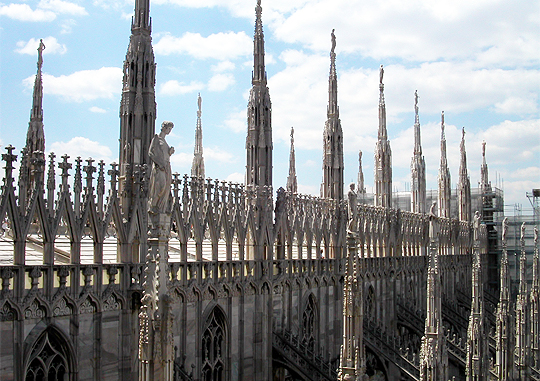
If there’s one thing you have to do at the Duomo, it’s to make a pilgrimage up to its roof. For 7€, you get to climb up 250 steps to the top, where you can admire the gargoyles up close, and enjoy a visual feast of the city.
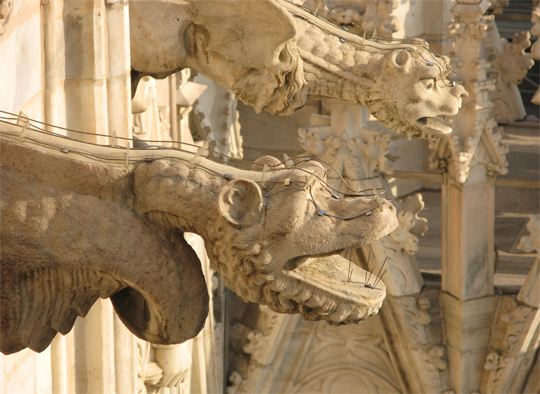
It you’re not up for the exercise, you can always take the elevator up, for 12€. The Duomo is a tourist magnet. To avoid crowds, visit early. Or at night, the lighting illuminates the cathedral, transforming it into a magical other-worldly structure.
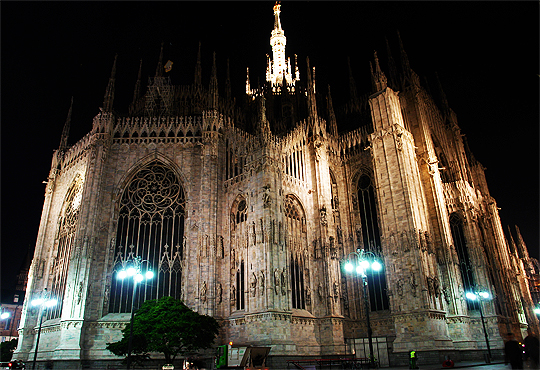
Tip: While the trip the Duomo’s roof has no dress code, other parts of the cathedral do. Guests are not allowed into the church grounds if not appropriately dressed. Legs and shoulders cannot be left uncovered.
Catch The Last Supper
You can’t claim to have visited Milan if you did not visit the masterpiece that is The Last Supper by Leonardo Da Vinci. It’s featured at the Church and Convent of Santa Maria delle Grazie, and is declared a world heritage masterpiece by the UNESCO. The painting may have been reproduced to death, but standing right in front of the real thing, you’d be able to notice details missing from reproductions. The painting has just finished its 25-year restoration.
Tip: Tickets to The Last Supper sell like hot cakes; you usually have to get them way in advance. Official Ticket Seller Vivaticket sells them three months in advance. It’s almost impossible to buy tickets on visiting day. A way to get around this is to join in city tours. These tours have guides who would explain in detail each character in the mural, offering insights that elevates the viewing experience of the iconic painting.
La Scala Opera (Teatro alla Scala)
Even if you’re not an opera fan, the la Scala Opera is still worth a visit. One of the world’s most famous opera houses, the structures awes with its neoclassical style by architect Giuseppe Piermarini. The current building is the second one and lifted its curtains in 1778, the first was destroyed in a fire in 1776. Composers who have wrote and conducted works here included maestros like Rossini, Puccini, Verdi and Toscanini.
The opera house experienced severe damages during World War II, and underwent restoration. Opened again in 1946, it features a museum with a remarkable collection of statues, paintings, costumes, and other opera-related items.
Tip: If you wish to watch one performance, tickers are easy to buy. Visit the La Scala’s website to check out whichever seat is on offer. The excellent website even gives you a shot of the stage from your chosen seat, so you won’t feel let down by a seat with less than perfect view.
Sforza Castle
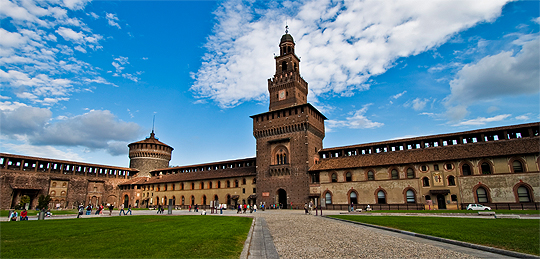
Once a military fortress, the 15th century built Sforza Castle has seen countless battles in its time. Today, it’s one of the most important monuments in Milan. The one-time defence base was occupied by the French, Spanish and Austrians, who took turns in tearing down and fortifying the place. This explains the castle’s unusual look, blending architecture from different cultures. The castle is now a place of history and art, with the castle walls decorated with paintings by artists such as Bellini, Mantegna, Titian and Van Dyck. Don’t miss the highlights- paintings and fresco ceilings from Leonardo da Vinci. The castle also contains a curious combination of collection of musical instruments, ancient classical works and Egyptian art.
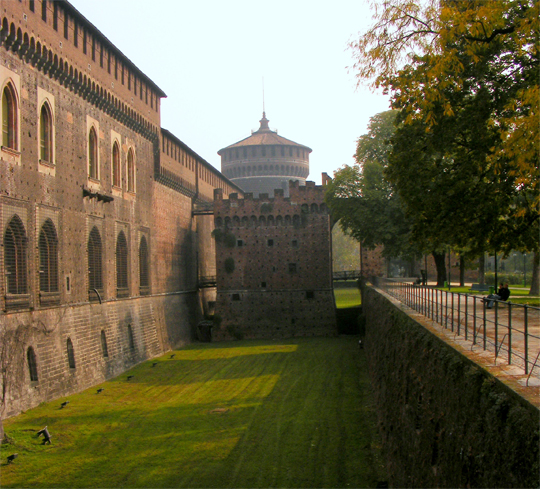
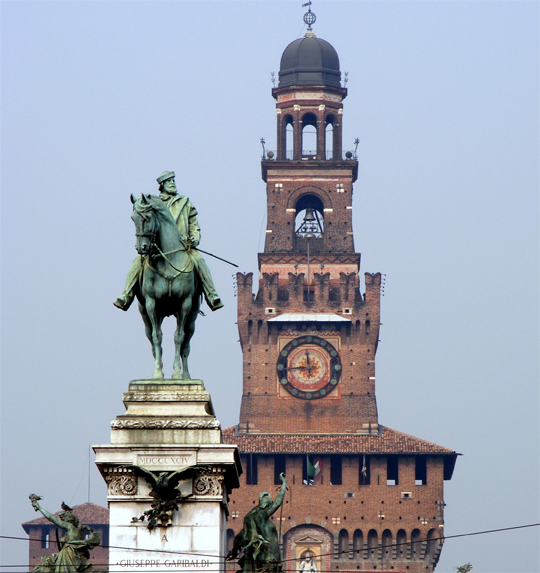
Some of the galleries and museum areas charged entry fees but it was possible to buy one inexpensive ticket which allowed access to all the indoor areas. The castle is within walking distance from the Duomo.
Do remember to visit the Sempione Park next to it. The expansive gardens offer a quaint respite after the tour. The gardens even have an Arch de Triumph, although much smaller than the one in Paris.
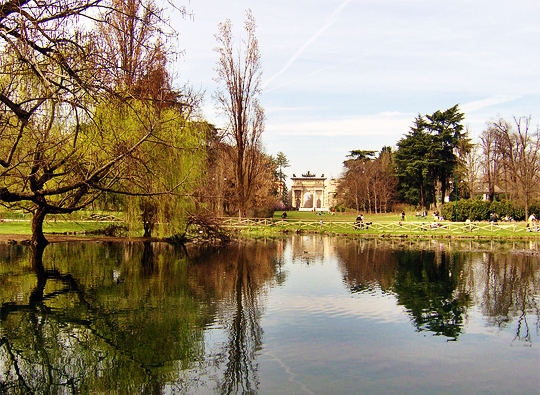
Tip: People often underestimate the time needed to tour the castle. Because of the variety and amount of collection, you may find yourself lost in history and culture. Prep at least half a day to soak in the castle’s offerings.
Walk the stretch of Quadrilatero d’Oro
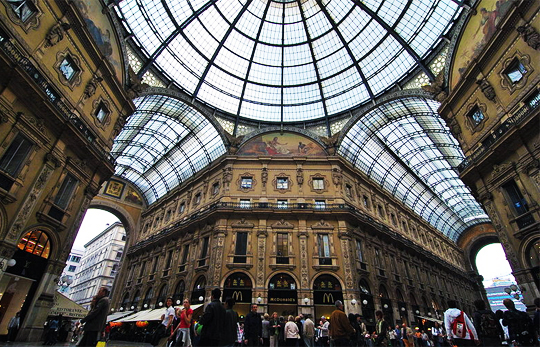
This is what shopaholics come to Milan for. The Quadrilatero d’Oro is a cluster of four adjourning streets next to the Duomo. This fashion district lines the world’s top brands side by side, each designed to outdo the other. The main artery of this shopping heaven, Via Montenapoleone, is one of 15 most luxurious and posh streets in the world.
Even if you can’t afford it, like me, it’s still a thrill to stroll down the street, with display windows that set your heart palpitating with its chic outfits, gorgeous handbags and glittering jewellery. Also take some time to marvel at the architecture, for these fashion boutiques are designed by renowned architects.
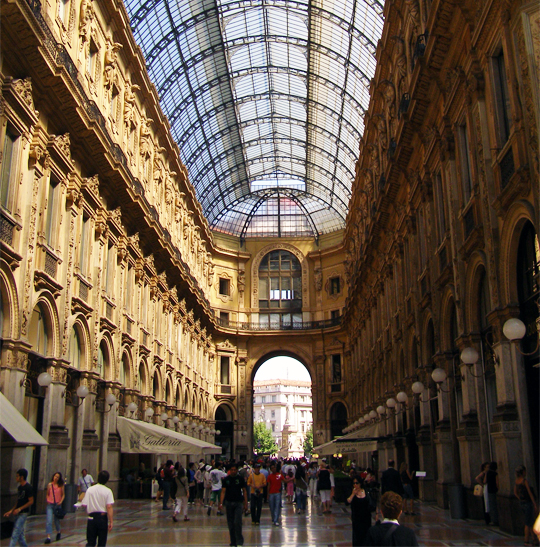
Tip: Unless you feel like splurging, you might want to think twice before settling down a roadside cafe along the Quadrilatero d’Oro. The brands here are expensive, so are prices at the cafes. Items here may cost up to three times that of places elsewhere in the city.
Tip: There are affordable shops in Milan as well. Shops around Corso Vittorio Emanuele, between the Duomo and the Piazza San Babila are mid-range and offer some pretty good bargains, whereas retro, vintage and cutting-edge apparel can be located around the hip Navigli area.
Monumental Cemetery (Cimitero Monumentale)
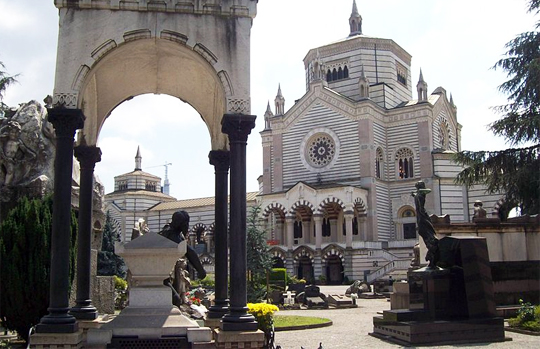
You may think it daft to visit a cemetery on a holiday, but nowhere gives a more poignantly beautiful view of classic Italian architecture than the Cimetero Monumentale. Tombs of varying designs and sizes lined the burial grounds, creating an open museum on architectural styles. You can see elaborate mausoleums with intricate designs of the rich, to lovingly carved marble and bronze sculptures as tributes to loved ones. This hauntingly stunning monument for those who have passed on is perfect for Italian architecture enthusiasts.
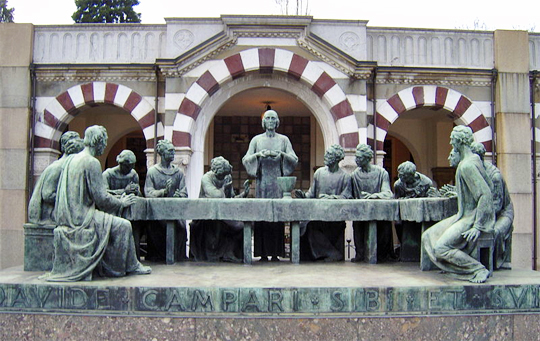
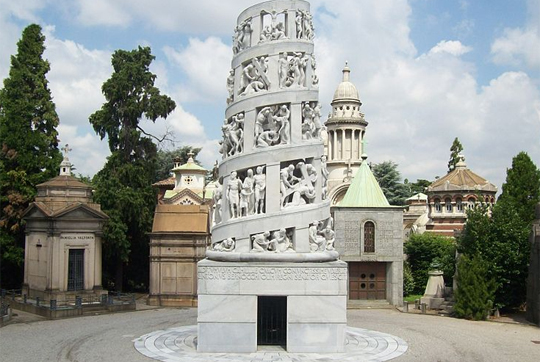
When to Visit
The people of Milan love to celebrate. If you visit the city in June, be prepared for a festive stay. The first two days of June is where Festa del Naviglio takes place, which means plenty of parades and musical performances. As seasons turn mellow, so do its music festivals. November sees the Milan Jazz Festival take place.
Food lovers should visit in December. The 7th is Milan’s biggest feast day. The Festa di Sant’Ambrogio is filled with religious celebrations, with traditional fairs that take place around the Fiera di Milano.
Food in Milan
Traditional Italian cooking is in wild abundance in the city. There are trattorias enoteche (wine bars) and expensive restaurants all over. Some of the must try local dishes include osso buco (braised veal shanks) and risotto alla Milanese (chicken-broth risotto made with saffron). Dinner time in Milan is around 7:30pm and is usually preceded by an aperitivo, a glass of sparkling wine.
Tip: Avoid restaurants around the Duomo, the tourist hotspot serves up subpar food at exhorbitant prices. There are even some restaurants that place an additional “serving tax” to your bill. Other places to avoid dining include eateries surrounding the central station, known for surreptitiously slipping in a serving tax of up to 5 Euros.
Transport in Milan
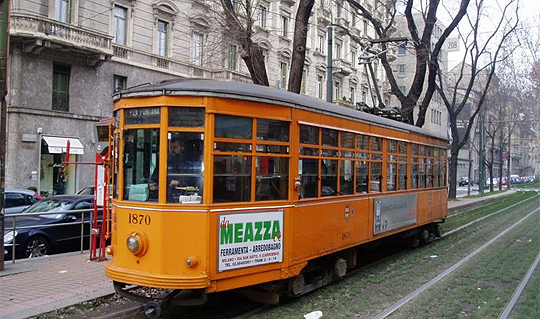
There are three main types of transport system in the city. The Metro system has an extensive web of 72 stations canvassing most areas of the town. Trains run every 1 to 3 minutes, with the service starting from 6am until midnight on weeknights and 2am on Saturday nights.
Trams, or streetcars, run above ground and on rails. This makes a pleasant way to travel; you get to see the sights. Tram stops have electronic information panels to let you know the waiting time for the next tram. This is useful for travelling shorter distances within the city.
Buses are less of a novelty way to move around the city, but offer a cleaner option with more routes to choose from. But do take note of when the lines end their service. Some end earlier and some do not have night service at all.
Single tickets cost 1.50 Euros and are readily available from newsstands, bars and automatic ticket machines in metro stations. If you’re going to be in the city for a few days, there are better options of 4.50 Euroes for a 24-hour period or 8.50 Euros for a 48-hour period. Tickets are not sold on buses or trams; you need to get them beforehand.
Summer time is usually hot and humid in Milan, while winter brings along fogs and rains. Spring and Autumn are ideal periods to visit. In Spring, the parks blossom with the season’s freshness, and city becomes alive with greenery. Easter especially, brings a festive feel to Spring.
